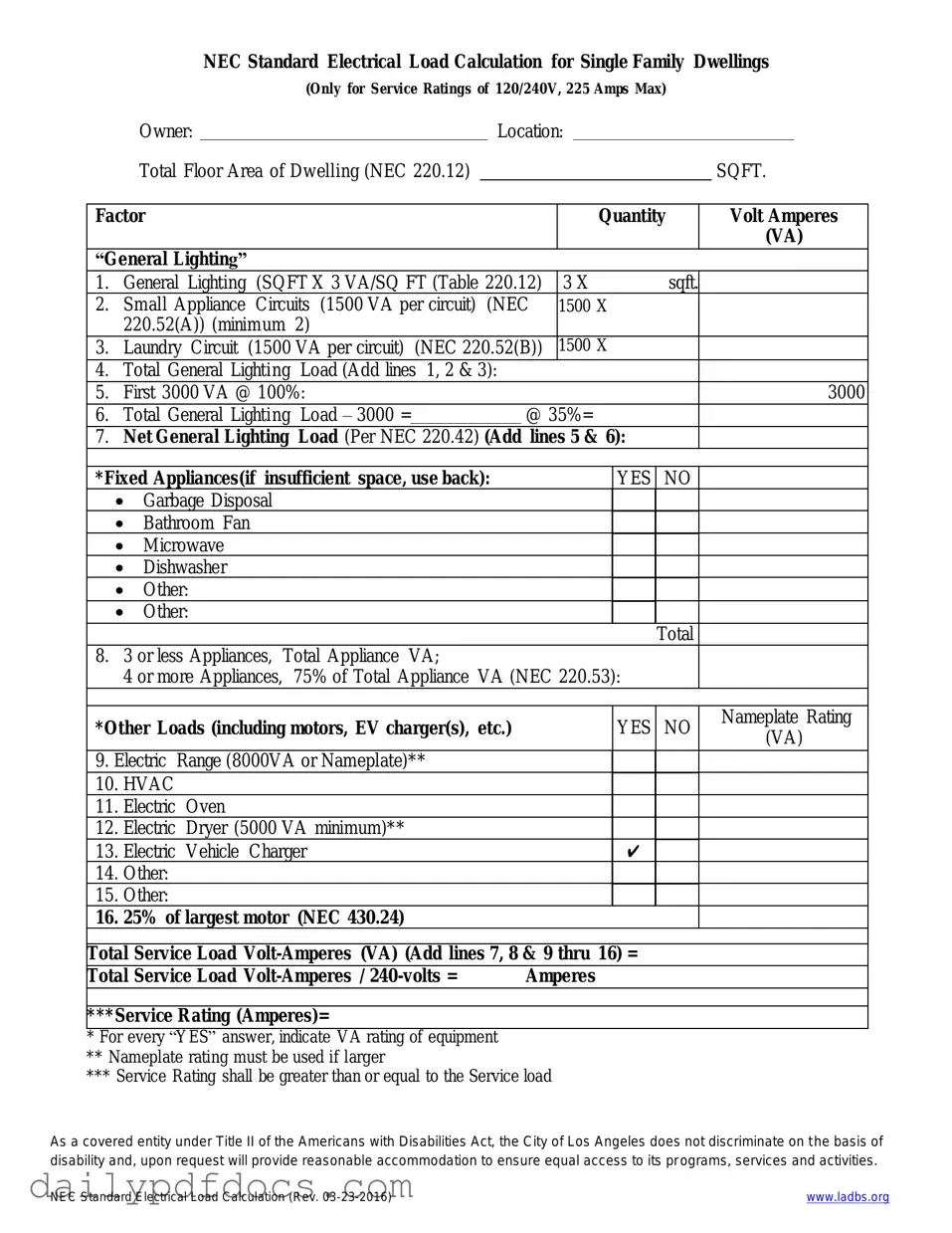What is the LADBS NEC Standard Electrical Load Calculation form?
The LADBS NEC Standard Electrical Load Calculation form is a document used to determine the electrical load requirements for a building or facility. It helps ensure that the electrical system can handle the anticipated demand safely and efficiently. By providing a systematic approach to load calculation, this form helps prevent overloading circuits and ensures compliance with the National Electrical Code (NEC) standards.
Who needs to fill out this form?
This form is typically required for contractors, electricians, and engineers involved in the design and installation of electrical systems. It is essential for anyone planning to install new electrical equipment, upgrade existing systems, or apply for permits related to electrical work. Proper completion of the form is crucial for obtaining necessary approvals from local building departments.
What information is required to complete the form?
To complete the form, you will need to gather several pieces of information. This includes details about the type of occupancy, the total square footage of the space, the number of outlets, lighting fixtures, and any major appliances or equipment that will be connected. Additionally, you may need to provide information on demand factors and any special loads that might affect the overall calculation.
How is the electrical load calculated using this form?
The electrical load is calculated by summing up the individual loads of all devices and fixtures within the space. The form typically includes sections for listing each load and applying demand factors as prescribed by the NEC. These factors help to estimate the actual load that will be used, rather than just the sum of all possible loads. This method results in a more accurate representation of the expected demand on the electrical system.
What happens if I do not submit this form?
Failing to submit the LADBS NEC Standard Electrical Load Calculation form can lead to several complications. Without this documentation, your electrical plans may be rejected, delaying your project. Additionally, if the electrical load is not properly calculated, it could result in safety hazards, such as overloaded circuits, which can lead to electrical fires or equipment damage. Compliance with local regulations is essential for the safety and functionality of the electrical system.
Is there a deadline for submitting the form?
While specific deadlines may vary based on local regulations and project timelines, it is generally advisable to submit the form as early as possible in the permitting process. This ensures that any potential issues can be addressed promptly. Delays in submission can impact project schedules, so it is best to plan ahead and allow sufficient time for review and approval.
Where can I obtain the LADBS NEC Standard Electrical Load Calculation form?
The form can typically be obtained from the local Department of Building and Safety (LADBS) website or office. Many jurisdictions provide downloadable versions of the form online, making it convenient for contractors and engineers to access the necessary documentation. If you have difficulty locating the form, contacting the LADBS directly can provide you with the assistance you need.

